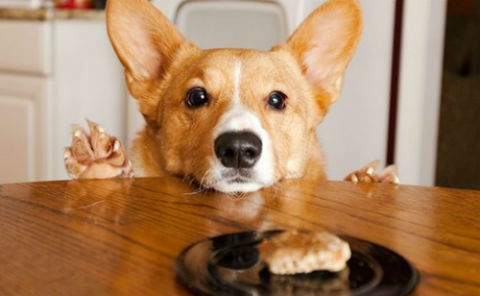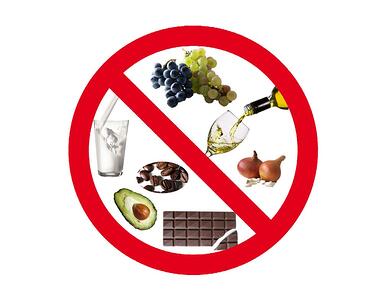Like dogs all the time want to eat what their owners eat, many wonder if Some dog vegetables can be included in your diet. A healthy bite is never more, as long as you choose the right option, because it is not recommended to give them any food. A healthy diet must be balanced and for this we must keep in mind fruits and vegetables since they are essential for our dog. They provide large amounts of nutrients that help reduce and control many diseases. Wolf Azul has a variety of rich feed in vegetables, for adult dogs we have the reference of blue salmon wolf and for puppies with the reference of blue wolf Puppy sensitive specially formulated to satisfy the healthy state of our dog. Among them we highlight the peas, carrots and the potato, essential for the strengthening of the immune system.
Some dog vegetables contain vitamins and minerals, in addition to that they are low in calories and provide fiber that promotes correct digestion. Be careful with the portion and form of preparation.
Recommended dog vegetables
There are many ways of Give vegetables to canines, without being raw, such as cooked, steamed, baked, roasted, grilled or dehydrated. Next We show you a list of good vegetables for dogs They will serve if you want to administer a healthier diet to your pet.
Potatoes
Potatoes are dog vegetables that provide a good source of vitamins C and B6, potassium, manganese and fiber. They must be washed well and cut into small portions without peeling. The best way to cook them is baked.
Asparagus
Well roasted asparagus give your pet a good dose of vitamin K, in addition to containing vitamins A, B1, B2, C and E, folic acid, iron, fiber, manganese and potassium.
Broccoli
Not only in humans, The broccoli is part of the dog vegetables that are most recommended, due to its contributions of vitamins C, K and A, together with folic acid, manganese and fiber. You can give them to your pet boiled or cooked in the microwave.
Brussels sprouts
Your dog will enjoy boiled Brussels. Consider adding them to your canine diet to receive a good ration of manganese, folic acid, fiber, potassium and vitamins A, B1 and B6.
Carrots
Carrots are Excellent dog vegetables. These snacks become a great source vitamins A, K and C, fiber and potassium, indispensable for the development of the hairy.
Cauliflower
The cauliflower will love your dog and improve their health for many reasons. It is recommended to grilled well washed with the purpose of providing vitamins C, K and B6 and folic acid to your pet.
Cucumber
Boiled cucumbers become A nutritious snack for dogs. You must wash them, peel them and remove the seeds. That way you will give your pet an important ration of vitamin K.
EDAMAME
Green soybeans, or Edamame, are dog vegetables that are prepared. You can get them frozen in the supermarket if you are looking to increase the dose of protein, iron, fiber, phosphorus, potassium, copper, magnesium, omega-3 and vitamins K and B2 of your furry friend.
French beans
Boiled green beans They constitute a dog meal that help improve their vital functions, thanks to the fact that they are a good source of vitamins C, K and A, manganese and fiber.
Peas
The peas admit several forms of preparation and provide a good source of vitamin K and C. also contains manganese, fiber, folic acid, phosphorus, proteins, magnesium, copper, iron, zinc, potassium and vitamins B1, A, B6, B3 and B2. What can be better?
Sweet potatoes
If you choose to dehydrate some sweet potatoes, You will get high quality dogs for dogs. This food provides vitamins A, C, B6 and B5, manganese, potassium and fiber.
Some dog fruits
In addition to the Dog vegetables We mention, there are some fruits that are also recommended if you want your canine to feed healthily with nutritious food. Among them are:
Apples
Bananas
Blueberries
Mangos
Oranges
Pears
Peach
Pineapples
Raspberries
Sandiah
Toxic toxic vegetables
Not all vegetables are recommended for canines, since there are foods that instead of providing nutrients deteriorate the health of your pets. Some toxic toxic vegetables that you should avoid In food they are as follows:
Onions: Dogs should not eat onions because they are poisonous for most pets. They can cause a break of red blood cells, in addition to causing vomiting, diarrhea, stomach pain and nausea.
Mushrooms: Wild fungi are usually toxic to dogs, and could even cause the animal's death. Maybe some species are good, but it is better to prevent than regret.
Tomatoes: Although the red part, the one that is mostly consumed, is considered safe for dogs, the green parts of the plant contain a toxic substance called Solanine, which in large amounts sick to dogs.
Some fruits that should also be avoided are avocados, cherries and grapes, since they can cause serious diseases.
Important tips
The best way to correctly feed your pet is to consult with a veterinarian, who has knowledge to design a food intake according to the race, age and size of your canine. Some additional tips on dog vegetables:
Although dogs enjoy raw vegetables, these animals have short digestive systems, so they do not get as many nutrients when eating raw vegetables as humans.
A good way for canines to obtain all the nutrients from dog vegetables is to prepare them in puree.
All dog vegetables must be well washed before cooking them.
Regardless of how you prepare dog vegetables, do not use salt, because you could cause heart problems.
Be careful with any adverse reaction, such as nausea or loose deposits.
Vegetables usually cause gases in dogs, so don't exaggerate with the amount you give them.
If you are giving your dog the vegetable for the first time, give only a small portion and observe its reaction before increasing size or quantity.
Now that you know the Good dog vegetables, you can design a varied diet that includes a greater amount of nutrients. That way, your pet will live happy, because food will promote better health and avoid the appearance of diseases. Find answers to other questions about dogs such as:
Soft diet for dogs with diarrhea
The 10 human foods that make your dog more
5 feed guidelines for your dog
Dog food allergy symptoms
Toxic foods for dogs

















